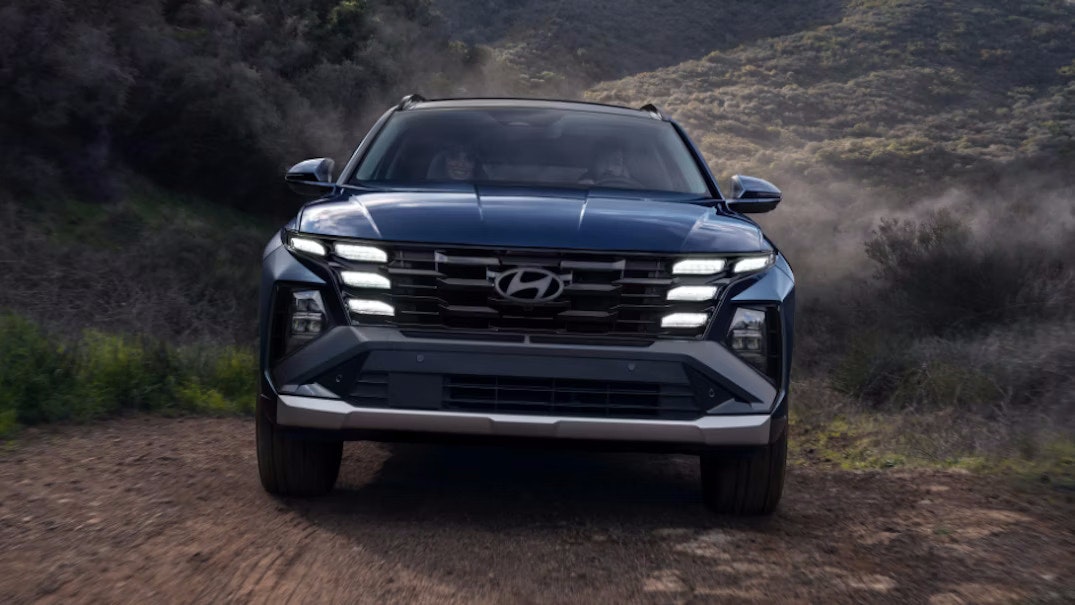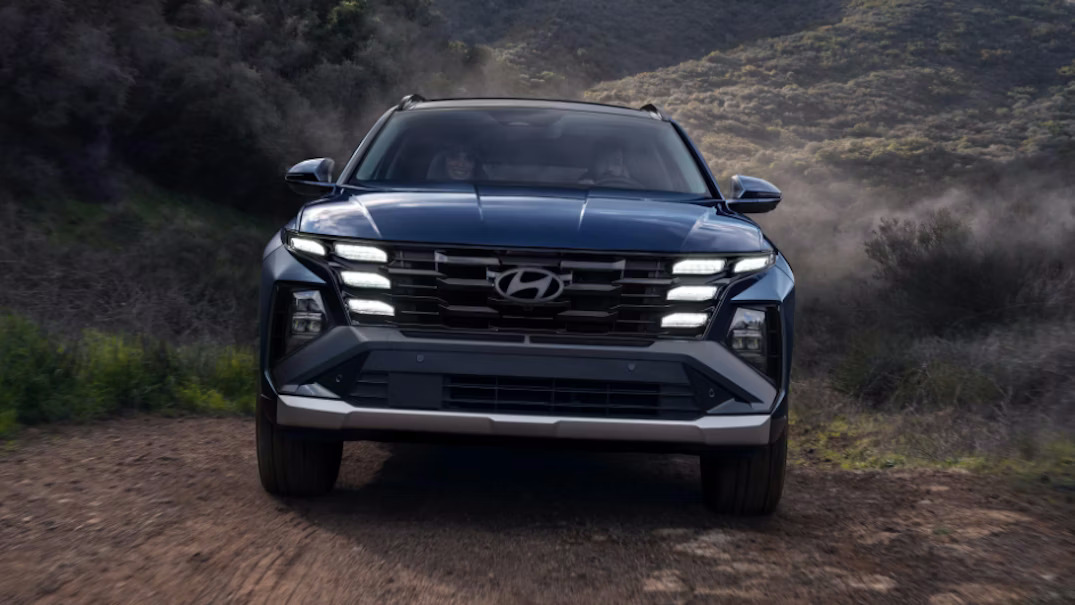
Hybrid vs. Non-Hybrid: 2025 Hyundai Tucson Powertrain Options

The automotive landscape is rapidly evolving, with manufacturers pushing the boundaries of efficiency and performance. The Hyundai Tucson stands out as a versatile compact SUV offering both conventional and hybrid powertrain options.
The 2025 Tucson Powertrain Lineup
Standard 2.5L Gasoline Engine
The Tucson base powertrain is a naturally aspirated 2.5-liter four-cylinder engine. This traditional internal combustion engine (ICE) option provides:
Power output: 187 horsepower
Torque: 178 lb-ft (241 Nm)
Transmission: 8-speed automatic
Drivetrain options: Front-wheel drive (FWD) or All-wheel drive (AWD)
Hybrid Powertrain
The hybrid variant combines a turbocharged 1.6-liter four-cylinder engine with an electric motor:
Combined power output: 231 horsepower
Combined torque: 271 lb-ft (367 Nm)
Transmission: 6-speed automatic
Drivetrain: Standard AWD
Battery: 1.49 kWh lithium-ion polymer battery
Plug-in Hybrid (PHEV) Powertrain
While not the focus of this comparison, it’s worth noting that Hyundai also offers a PHEV version:
Combined power output: 265 horsepower
Combined torque: 271 lb-ft (367 Nm)
Electric-only range: Approximately 53 km
Battery: 13.8 kWh lithium-ion polymer battery
Performance Comparison
Acceleration and Top Speed
The hybrid Tucson outperforms its counterpart in terms of acceleration:
Conventional 0-100 km/h: Approximately 9.0 seconds
Hybrid 0-100 km/h: Approximately 7.2 seconds
Top speeds are comparable, with both versions reaching about 190 km/h, though the hybrid may have a slight edge due to its additional power.
Driving Dynamics
With its conventional powertrain, the conventional Tucson offers a familiar driving experience. The 2.5L engine provides adequate power for daily driving but may feel strained under heavy loads or during steep climbs.
In contrast, the hybrid variant benefits from the instant torque of the electric motor, resulting in more responsive acceleration, especially from a standstill, making it feel more agile in urban environments and when merging onto highways.
The hybrid’s additional weight (about 130 kg more than the conventional) is offset by its increased power output, resulting in a well-balanced driving experience. Some drivers may prefer the smoother power delivery, thanks to the electric motor filling in torque gaps during gear changes.
Fuel Efficiency
One of the most significant differences between the two powertrains lies in their fuel efficiency:
Conventional Fuel Economy (FWD)
City: 10.2 L/100 km
Highway: 8.1 L/100 km
Combined: 9.3 L/100 km
Hybrid Fuel Economy
City: 6.4 L/100 km
Highway: 6.9 L/100 km
Combined: 6.6 L/100 km
The hybrid variant shows a remarkable improvement in fuel efficiency, particularly in city driving, where it excels due to its ability to recapture energy through regenerative braking and operate on electric power at low speeds.
Environmental Impact
The environmental benefits of the hybrid Tucson are significant:
CO2 Emissions (conventional): Approximately 215 g/km
CO2 Emissions (Hybrid): Approximately 152 g/km
Over a year of average driving (20,000 km), this translates to a reduction of about 1.26 tonnes of CO2 emissions for the hybrid model.
Practicality and Versatility
Cargo Space
One notable difference between the two variants is cargo capacity:
Conventional Tucson: 1,095 liters behind rear seats, 2,119 liters with rear seats folded
Hybrid Tucson: 1,029 liters behind rear seats, 2,053 liters with rear seats folded
The slight reduction in the hybrid’s cargo space is due to the placement of the battery pack. However, the difference is minimal and unlikely to significantly impact most users’ daily needs.
Towing Capacity
Both versions of the Tucson offer respectable towing capabilities:
Conventional Tucson: Up to 907 kg (2,000 lbs)
Hybrid Tucson: Up to 1,588 kg (3,500 lbs)
The hybrid’s superior towing capacity is a notable advantage for those who frequently haul trailers or boats.
Range and Refueling
The improved fuel efficiency of the Tucson hybrid translates to an extended driving range:
Conventional range (FWD): Approximately 715 km
Hybrid range: Approximately 900 km
This increased range means fewer stops for refuelling, which can be particularly beneficial on long trips. However, it’s worth noting that both powertrains use regular gasoline, so there’s no need for special fuel or charging infrastructure as with full electric vehicles.
Maintenance and Reliability
Hyundai has a strong reputation for reliability, and both powertrain options will be dependable. However, there are some differences to consider:
Conventional Maintenance
The conventional powertrain is simpler, with fewer components that could potentially require repair or replacement. Regular maintenance typically includes:
Oil changes every 8,000 km or 6 months
Transmission fluid changes every 96,000 km
Spark plug replacement every 160,000 km
Hybrid Maintenance
This system introduces additional components, including the electric motor and battery pack. While these are generally reliable, they do add complexity to the vehicle. Maintenance for the hybrid includes:
Oil changes every 12,000 km or 12 months (less frequent than conventional)
Inspection of components every 24,000 km
Potential battery replacement after 8-10 years (covered under warranty for the first 8 years/160,000 km)
It’s worth noting that the regenerative braking system can reduce wear on the traditional braking components, potentially leading to longer brake life.
Drive Experience and Refinement
Noise, Vibration, and Harshness (NVH)
The hybrid Tucson generally offers a quieter and smoother driving experience, especially at low speeds when it can operate on electric power alone. The transition between electric and gasoline power is seamless in most situations.
While still refined, the conventional model may exhibit more engine noise under heavy acceleration due to the naturally aspirated engine working harder to produce power.
Throttle Response and Power Delivery
The hybrid’s electric motor provides instant torque, resulting in more immediate throttle response and smoother acceleration, which can be particularly noticeable in stop-and-go traffic or when you need quick bursts of speed for overtaking.
The conventional model relies solely on its gasoline engine, which means power delivery is more linear and predictable but may feel less responsive in certain situations.
Technology and Features
Both powertrain options are available across various trim levels, so many features are common to both. However, the hybrid model does come with some unique tech:
Regenerative braking system with paddle shifters for adjustable regen levels
Hybrid-specific instrument cluster displays for power flow and energy usage
Available solar roof panels (on some markets) to help charge the battery
Resale Value and Market Trends
As the automotive market continues to shift towards electrification, hybrid vehicles are likely to maintain strong resale values. The Tucson hybrid may depreciate more slowly than its conventional counterpart, potentially offsetting some of the initial price premium.
However, it’s important to note that many factors, including overall market conditions, fuel prices, and government emissions and fuel efficiency policies, can influence resale values.
Choose the Right Tucson for You
The decision between the hybrid and conventional Hyundai Tucson ultimately depends on individual needs, preferences, and circumstances:
Choose the Non-Hybrid If:
You’re looking for a lower initial purchase price
You frequently drive long distances at highway speeds
You prefer the simplicity of a traditional powertrain
You’re not as concerned about fuel efficiency or emissions
Choose the Hybrid If:
You prioritize fuel efficiency and lower running costs
Your driving is primarily in urban or stop-and-go conditions
You’re willing to pay a premium for better performance and reduced emissions
You want the latest in automotive technology
You need higher towing capacity
Both versions of the Hyundai Tucson offer compelling packages, blending style, practicality, and advanced features. The hybrid model pushes the envelope further regarding efficiency and performance but comes at a higher initial cost. You can choose the Tucson that best fits your lifestyle and values by carefully considering your driving habits, budget, and priorities.
Regardless of which powertrain you choose, the Tucson represents a strong contender in the competitive compact SUV market, offering a blend of comfort, technology, and Hyundai’s renowned warranty coverage. As always, a test drive of both variants is highly recommended to truly appreciate the differences and make the most informed decision possible.
